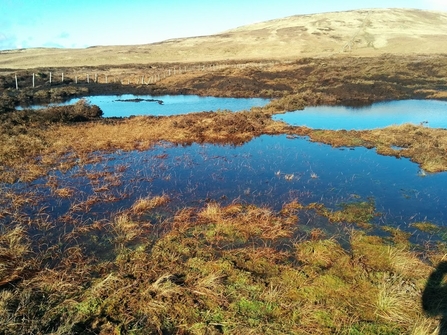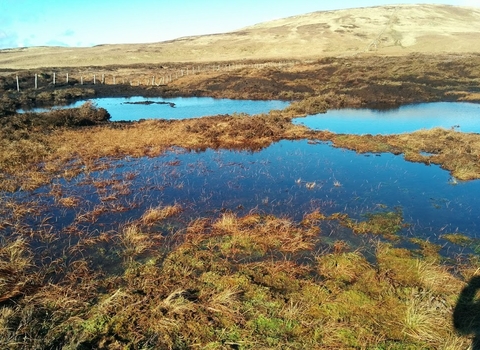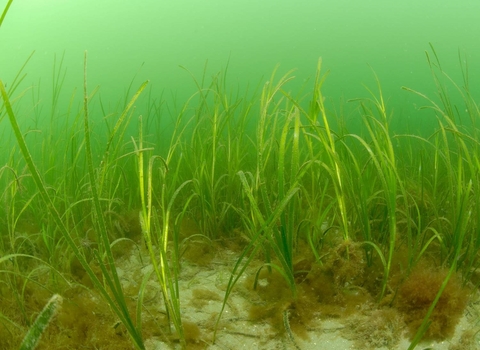
Armboth Fell after peatland restoration © Cumbria Wildlife Trust
Gifting membership? Order by Wednesday 17 December in time for Christmas.

Armboth Fell after peatland restoration © Cumbria Wildlife Trust
Nature has a fantastic and proven ability to trap carbon safely and provide other important benefits, if we restore damaged landscapes and allow them to recoverStephen Trotter, CEOCumbria Wildlife Trust
We are calling on the UK Presidency of the global climate conference COP26 to tackle the nature crisis alongside the climate emergency – or neither will be solved. Speaking ahead of the international conference in Glasgow (31 October to 12 November), Stephen Trotter, Chief Executive of Cumbria Wildlife Trust, said:
“It’s vital that Cumbria is resilient to the climate of the future – but sadly we are a long way from achieving this.
“There is an urgent need to put nature into recovery across Cumbria if we’re going to adapt to the extremes of climate that are likely in the coming years and decades. Not only is that going to help wildlife, local communities and the environment adapt to global warming and extreme weather - but nature can make an important contribution in its own right to achieving net zero carbon emissions in Cumbria.
“Nature has a fantastic and proven ability to trap carbon safely and provide other important benefits, if we restore damaged landscapes and allow them to recover. Many of Cumbria’s most important wild habitats such as peatland, woodland, grasslands, saltmarsh and the sea bed of the Irish Sea, amongst other wild habitats, are vital carbon stores and have the potential to do even more as nature-based solutions to the climate problem. But these natural places are currently in decline and face even greater risk of degradation from the extreme climatic conditions that are already inevitable over the next 30 years. “
"In addition to the urgent task of cutting emissions at source, we need to see a massive increase in the amount of land and sea that’s protected for nature – and increase it to at least 30% of Cumbria’s land and sea by 2030.
“The Government must embed climate action – mitigation and adaptation – and take urgent steps to stop carbon-emitting activities such as new road building, peat burning and trawling the seabed.
“For many years Cumbria Wildlife Trust has been working hard with partners and communities across Cumbria, to restore and protect key habitats that can store carbon, such as peatlands. When damaged, peatlands, release the equivalent of 23 million tonnes of CO2 every year. In Cumbria we found that over 95% of peatlands surveyed were in poor management condition, so it’s crucial that we continue to do what we can to repair them, for the sake of wildlife and the environment. Restored peatlands can capture more carbon, reduce flooding, clean our water, and allow wildlife to thrive. It’s not just peatlands that can store carbon though - we’re conserving ancient woodlands such as at Staveley, and planning for adaptation to climate change, by trialling innovative natural solutions to flooding in areas that are at risk, such as at Birds Park in Kendal.”
Cumbria Wildlife Trust, along with the other 45 Wildlife Trusts around the country, are calling on the Government to:
PEAT
THE SEA
FARMING
WOODLAND
PLANNING
We have a list online of things people can do about climate change, ranging from choices about the food we eat, the way we travel and how to stop homes overheating.
What is COP26? Click here for an explanation of COP26.

Armboth Fell after peatland restoration © Cumbria Wildlife Trust
We've been restoring upland peatlands since 2001. This year we've worked in partnership with National Trust, United Utilities, Fix the Fells and Natural England to restore 21 hectares of damaged peatlands at Armboth Fell near Keswick. As a result we estimate 23 tonnes of CO2 per year will be saved from going into the atmosphere. Volunteers helped us plant thousands of plugs of cotton grass and heather by hand across areas of exposed peat. This species is native to peatlands and wetlands and as the plants grow their root systems will help stabilise the restored areas and reduce erosion.
Volunteeer at Staveley woodlands
We’re working closely with local volunteers to connect Craggy Wood with the rest of Staveley Woodlands, creating a fantastic wildlife corridor. Local people are growing native tree saplings in their yards and gardens, ready for planting out in the new year and growing sample trees in an allotment. When ready, these trees will be planted out to link the two areas of woodland. We're managing the woodland for the long term and will, over time, gradually restore it as a temperate rainforest, a rare type of woodland rich in mosses and lichens which is only found in the wettest uplands of the west of England.

Seagrass bed © Paul Naylor
Did you know that the sea plays a vital role in regulating the health of our planet? Seas are like the lungs of our planet, absorbing 20-35% of human-made CO2 emissions every year. Seagrass is the only flowering plant able to live in seawater and plays an incredibly important role in the carbon storage system – just one hectare of seagrass may store two tonnes of CO2 a year and hold it for centuries, while providing nursery habitat for young fish.
It's estimated that the UK has lost 92% of our seagrass in the last century. So we are carrying out surveys of seagrass meadows in the Walney Channel, to see how much there is and how healthy it is. We’d like the Government to make sure all seagrass meadows are protected from further damage and support initiatives to help restore areas of seagrass to their former glory, allowing them to take an important role in tackling the climate crisis.

Volunteers from Kendal Conservation Volunteers making natural flood defences above Kendal © Cumbria Wildlife Trust
We're pioneering a range of natural flood management techniques, including a project at Birds Park, Kendal, focussing on using willow 'hydro-hedges' as natural flood defences. These hedges have the ability to hold back up to 5,000 cubic meters of water during a storm. The project will slow the flow of water and create wetlands and woodlands, which are rich in wildlife and actively lock away carbon. This partnership work and research is been carried out by local volunteers, on the United Utilities land at Kendal’s disused reservoir.